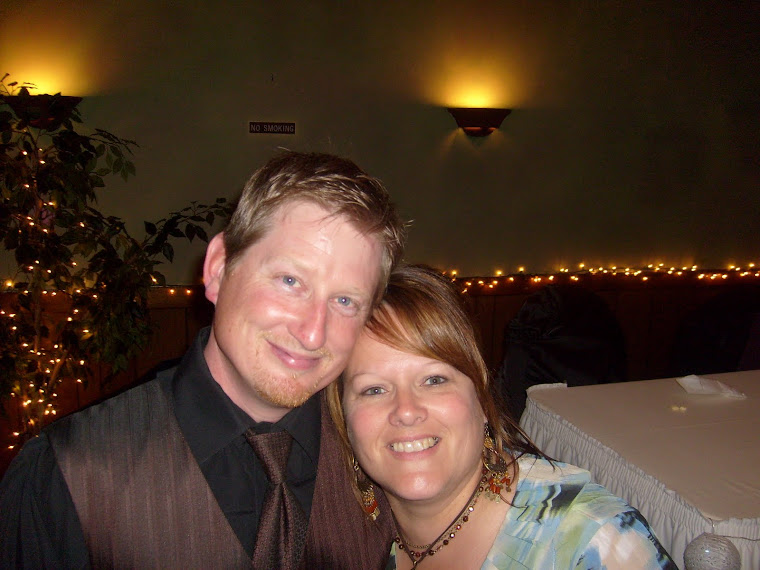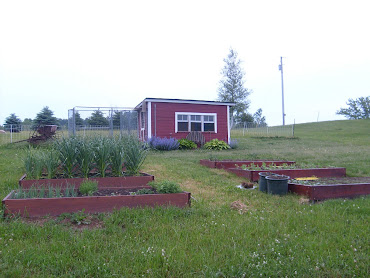I have been following Lori Stephenson's trip through the Shetland Islands on her blog. Through her posts and pictures I've come to understand a little bit more about the sheep of the Shetland Islands.
I would encourage anyone wanting accurate, historical information concerning Shetland sheep to follow her blog during her trip. Lori has some of the finest shetlands I've seen in my neck of the woods, not to say there aren't other breeders in my area with quality animals, because there are several and I love sinking my hands in to the fleeces of everyone of them.
I am an avid knitter, just starting to learn the hand spinning process, so I decided I wanted to ask some of my colleagues that have been spinning for years about staple length and how it relates to hand spinning. So, last night, as our weekly knitting session with the gals, I asked a lot of questions. And since our knitters meet at the local fiber mill, I got a chance to inquire about how staple length affects hand spinning AND machine spinning.
What a treat to hear back from so many experienced hand spinners, several of which have been spinning for 30 yrs or more. When asked if spinning is made more difficult by a shorter staple length, ei 3 to 4", everyone said that as long as there is proper crimp and elasticity it has no bearing on the difficulty when they hand spin. So, I posed the same question to the lady that runs the mill and she said that short fiber, unless it's 2" or less, seems to be the preference for the machines. She also added, without me even asking, that long staple length can cause a bunching up of fibers in the spinning machine, whereas, the shorter staple lengths don't do that. She also said that the double coats spin ok, but have some issues with bunching as well, so a lot of time she makes single ply Lopi style yarn from this wool. She also indicated that all yarn dictates the way in which it will be spun, whether it be long, short, coarse, fine, etc. Some fiber from older animals can break causing build up on the rollers of the spinning machine, it's likes to shed tiny scales and particles and this sticks to the rollers.
The hand spinners chimed in to say that they prefer the crimpier fibers to the flat ones, as this creates more elasticity in the finished product. But, all of them said that there is a place for all types of fiber and yarn, the yarn can tell you it's purpose.
I guess the point I'm trying to make is that we can find an outlet for our product, it doesn't really matter if you have long wool, short wool, single coats, double coats, it all serves a purpose. I take exception to anyone that totes their methods, fiber or process as THE only way to go. The only thing that continues to be a constant in all of this is softness. Everyone I spoke to about this insisted that the softness was the #1 priority when it came to fiber they chose to spin. None of the women I asked about any of this raise Shetlands, so they are far removed from the difference of opinions amongst some of the Shetland breeders. I never even mentioned why I wanted to know any of this information, they simply concluded that I wanted to be educated.
I read, with a sinking heart, a blog or two that continues to bad mouth anyone that doesn't agree with their views. A phrase that my mother used to recite to me years ago comes to mind as I'm reading, "Better to remain silent and be thought a fool, than to open your mouth and remove all doubt." This is not meant to be harsh, as I have done it more than once in my lifetime and wish I could take my words back!
I don't claim to know everything, but do I believe that constant education and keeping an open mind are two of the most valuable tools at anyone's disposal. That's why I am going to continue to listen to the breeders that have years and years of work and research invested in these wonderful little creatures that we all love so much. And, I am going to continue to hope that we find a way to compromise or work together instead of further name calling and criticism of other breeders and their flocks.
In a perfect world, we would all be brought together simply by our love of the Shetlands, but if everyone has to be right, then nobody wins.....and I have to ask, is it that important to win? So important that we lose so much? I'd like to think that we can find some common ground.
TaTa for now.....please know that I mean nobody any disrespect with this post, it's simply an appeal of sorts.
Proudly raising Purebred Registered Shetland Sheep with the belief that Animals and people deserve respect and love in equal measure
Subscribe to:
Post Comments (Atom)
Mike and I

Mike and I at Nick and Emily's wedding
Raised beds & chickens coops

Can't wait for this stuff to actually be food....

Can you give me Lorie's blog addy? I had it, but forgot to "follow" it.
ReplyDeletehttp://sommarangfarmshetlands.blogspot.com/
ReplyDeleteHi Kelly,
ReplyDeleteFor what it is worth, I talked to the late Kent Ferguson, about a week or so before he suddenly passed away, earlier this year. I asked him several specific questions as to what kind of fleece would process the best as well as the staple length requirements for mill processing. He reiterated what you said but also said that his mill (which has machines that date to around 1920) would process staple lengths around 3/4". What they had problems with, as you also found out, was with the longer, double coated wools. This does not mean that they could not process it, but that they had much more trouble with it, especially with the drafting and spinning because of the differing lengths of wool. This was also just pointed out to me by the owners of Lonesome Stone. The machines generally are not set up with a differing draft zone, unlike human hands which can accomodate the lengths, so cannot process differning lengths (I wanted to mix some longer kid mohair with an elastic but shorter than the kid wool - she said it would not work very well).
As all Shetland wool was sent off the islands to be spun into yarn then shipped back at the time of the writing of the standard (see Knitting by the Fireside), excepting for the gossamer lace weight yarns, it would seem that the wool would tend to be more of what is seen on the islands now as well as in the UK. This is not to bring controversy but to bring facts to light. Shetland wool was also sometimes mixed with coarser wool when mill processed 100 years ago, because the wool was so soft.
I also agree with you, the most important, and sometimes the most overlooked aspect of Shetland wool is the "extra fineness and soft texture" of it. Would that we would all strive for that aspect of it, there would be much less to worry about.
Thanks for posting this.
Theresa
Thank you Kelly for the beautifully stated appeal.
ReplyDelete"....I believe that constant education and keeping an open mind are two of the most valuable tools at anyone's disposal."
ReplyDeleteBravo, Kelly!
Well said, indeed!
Hear Hear!
ReplyDeleteI am about "done" with breeders who use harsh words for others-- or their sheep, wool, whatever. But not the breed. Love those sturdy little Shetlands. Good research, good writing. Thank you.